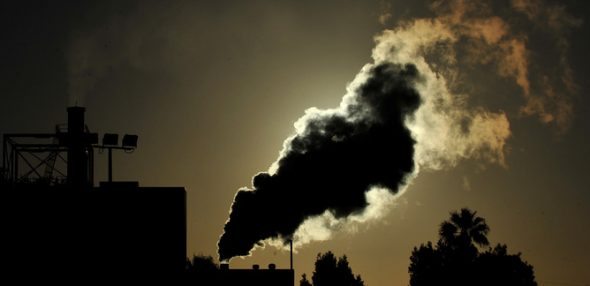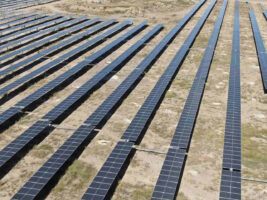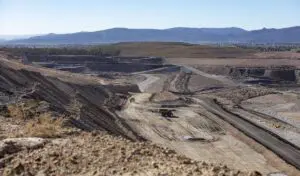
The recent controversial split in the Climate Change Authority revealed a deep rift between those who believe that the adage “politics is the art of the possible” means we have to always seek compromise and those who believe it sets us the challenge of influencing and reshaping what is possible.
This is a vitally important debate, in the context of a climate change threat that requires us to act with greater urgency and depth than almost anything before.
But what is stark is that, in this case, it was a debate happening in a vacuum. The Authority, politicians, environmentalists, business people and commentators – all were discussing the pros and cons of “fixing” the Abbott/Turnbull ‘Direct Action’ scheme in the absence of any comprehensive analysis of its operation.
That is the gap the Green Institute is attempting to fill with the report we are releasing today: Mulga Bills won’t settle our climate accounts: an analysis of the Emissions Reduction Fund.
A clear-eyed view of what is actually happening, and how the architecture of ‘Direct Action’ enables that, shows that, regardless of your attitude to the philosophical question, the Emissions Reduction Fund (ERF) simply cannot provide a solid foundation to build on. That is because it would link a capped market in industrial pollution to an uncapped, unregulated, out-of-control market in land sector abatement.
Globally, climate change politics and action are moving faster than ever before. The world is not yet doing what it will take to tackle this immense challenge, but, driven by a powerful movement demanding action, it does seem like the ship is finally turning.
Meanwhile, in Australia, the more things change, the more they stay the same. Our movement here is strong, and getting stronger. But our governments fail to act, safe within a political conversation which has moved nowhere since the 1990s.
That’s how the Federal Government is able to get away with pulling essentially the same bait-and-switch trick with land use emissions that they played at Kyoto 20 years ago.
Margaret Blakers and Margaret Considine painstakingly pieced together the results of the three ERF auctions held so far from the five different databases where relevant information is kept – the Project Register, the Contract Register, the Mapping Files, the Interactive Map and the Media Resources. Along the way, they turned up inconsistencies among the data sets, raising questions about how much the Government itself truly understands their own program.
Unsurprisingly for those who have been watching, they revealed that, while Australia’s emissions profile is some 80% industrial emissions, the abatement purchased under the ERF is 80% from the land sector, with only 4% coming from Energy and Industrial Processes. So, first off, the policy is doing essentially nothing to address the bulk of Australia’s emissions.
This, however, is only the beginning of the problems with the focus on land sector abatement turned up by Blakers and Considine’s analysis.
The first fundamental flaw is that much of the abatement is not permanent. Land sector abatement has the option of declaring itself for a period of 100 years or 25 years. An astonishing 35% of land sector abatement, accounting for a full quarter of the total abatement purchased under the ERF, is for 25 years only. After that time, landholders are free to do what they like with the land, quite possibly sending all the accumulated carbon back into the atmosphere right at the time when the world needs to be reaching zero net emissions. What’s more, projects which have chosen the 100 year period are at high risk of failure as the scheme includes no requirement for ongoing management, and the full financial benefit is front-loaded. There appear to be no provisions at all for long term auditing or monitoring to ensure that the carbon is indeed remaining in the land.
Further, the additionality of many of the projects is called into question. Certainly, landfill projects to a value of $250 million are carried over from the previously existing Carbon Farming Initiative. And much of the Mulga, where the vast majority of land sector abatement is focussed, is cleared and recleared every 15 years. This means that a 25 year contract will, at best, lead to the deferral of one clearing cycle.
The focus on the Mulga is a fascinating, previously completely unknown factor. More than 75% of land sector abatement, accounting for over half of the total carbon credits purchased through the ERF, comes from two bioregions in south western Queensland and western NSW – the Mulga Lands and the Cobar Peneplain. Given that this area is prone to drought and at greater risk from climate change itself, this is a very high risk concentration of effort. In addition, a very small group of five contractors, massively dominated by one, account for over half of all vegetation contracts, over half the area of projects under contract and 80% of contracted vegetation abatement. This, too, is a high risk strategy.
So, even the emissions reductions purchased from the land sector are highly questionable.
It’s not unlikely, in other words, that the vast bulk of the $1.73 billion spent so far through the ERF, the Turnbull Government’s only major climate policy, has been wasted.
So much so unsurprising. But what of the vital question – can it be “fixed”?
The discussion around turning ‘Direct Action’ into a viable alternative hinges on a more stringent safeguard mechanism enabling the existing architecture to be transformed into a baseline and credit scheme.
But the Safeguard Mechanism applies only to the industrial sector. It doesn’t apply at all to the directly linked land sector. And, in the current circumstances, it is hard to imagine how it could apply to the land sector.
This is where Blakers and Considine’s analysis shows the biggest hole. The ERF have been channelling vast funds into abatement in the land sector while barely touching the sides of the ever increasing emissions the sector is producing. Despite pouring $300 million dollars into avoiding land clearing, for example, it accounts for less than 5% of the emissions projected from land clearing through to 2030. The real situation is likely to be much worse because those projections do not take account of recent state government decisions to weaken land clearing regulations even further.
Essentially, we are doing nothing more than paying some people to reduce clearing with one hand while allowing a whole lot more to be cleared with the other.
If, with the current architecture, the ERF were transformed into a baseline and credit scheme, it would allow Australia’s high-polluting, fossil-fuel-driven industrial sector access to largely unregulated and uncapped ‘abatement’ from the land sector. Simply put, linking a capped market with limited supply to an uncapped market with far greater supply cannot form the basis for an effective policy mechanism.
The Emissions Reduction Fund not only fails its own test of delivering ‘real and additional’ emissions reductions, but it cannot serve as the foundation for more serious action without completely separating industrial emissions from land sector abatement. And that would be a completely different scheme, with dramatically different architecture. Instead of fiddling around the edges while Rome burns, we should design a better model from the outset.
Treating ‘Direct Action’ as fixable only limits political debate, keeping it as the only “possible” alternative. That is not the reality. Our task should be to make what is necessary possible.
Tim Hollo, Executive Director, The Green Institute








